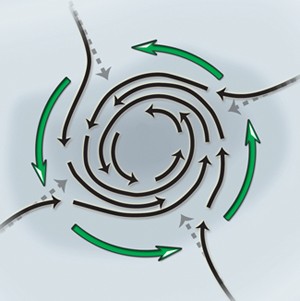This diagram features a
A. anticyclone, northern hemisphere.
B. cyclone, northern hemisphere.
C. anticyclone, southern hemisphere.
D. cyclone, southern hemisphere.
Answer: B
You might also like to view...
 R = reactants P = productsFor the above energy profiles, which reaction has the highest activation energy?
R = reactants P = productsFor the above energy profiles, which reaction has the highest activation energy?
A. a B. b C. c D. d E. All have the same activation energy.
Explain how a raindrop forms through the Bergeron process. How does it differ from the collision-coalescence process?
What will be an ideal response?
Which of the following is associated with an La Niña-ENSO phase?
A) reversal of the northeast trade winds B) higher pressure over the western Pacific and lower pressure over the eastern Pacific C) weakened upwelling in the Humboldt (Peru) current D) increased thermocline in the eastern Pacific E) cooler than normal sea surface temperatures in the eastern and central Pacific
________ is currently the most volcanically active object in our solar system.
A. Europa B. Mercury C. Our moon D. Io E. Mars